“Reading to children should not be presented as a chore or duty. It should be offered to them as a precious gift.”
(Kate DiCamillo)
Everybody loves to be read to. Almost everyone has nostalgic memories of being read to as a child, or reading to their own children or grandchildren. I was lucky enough to be brought up in a home where reading bedtime stories was part of everyday life. I remember one book in particular, The complete illustrated stories of The Brothers Grimm, from which we were allowed to choose one story each night. Tucked up in bed, we would beg for ‘just one more story’ in a desperate attempt to eke out the bedtime ritual.
Eventually, as we grew a little older, we’d scour the index pages in search of the longest stories in the book and these would inevitably be the ones we’d choose over and over again. I actually kept the book – despite being tea-stained and torn I couldn’t bear to part with it – and it still lives on my bookshelf now, over 20 years later. I loved listening to stories. I still do. Only now, it’s usually Stephen Fry’s dulcet tones on audible instead.

I was sad to discover that only 32% of British children are read to daily by an adult (according to the annual reading habits survey by Nielsen Book Research in partnership with Egmont Publishing). The research also revealed that most parents stop reading to their child by the age of eight, with just 19% of 8-10-year-olds having books read to them by an adult daily. Parents tend to stop reading to their children once they can read independently. They’re read to until they’re old enough to read by themselves, but then it seems to stop.
Alison David, Consumer Insight Director at Egmont Publishing, said: “We know that reading to children is a very effective way to encourage them to read independently but, sadly, many parents simply don’t know what a great impact they could have on their children’s lives if they read to them daily. Many parents confuse literacy with reading for pleasure, so it is seen as a task to complete rather than a joy to share. If a child has mastered reading skills, it does not mean they will choose to read for pleasure, and even if they are currently reading independently it does not mean this will continue – there are many and growing distractions. Reading to them throughout childhood reinforces the great pleasure of sharing a story; it creates quality time in hectic family schedules, close moments of parent-child bonding and, effectively, future-proofs a reading habit.”
The Teachers as Readers (TARs) Research (Cremin et al. 2008) also highlighted that many teachers were only reading aloud to children when it was linked to, and used for, comprehension and related writing activities. Many teachers did not provide opportunities for reading aloud, unless it was linked to learning objectives in Literacy. Sadly, I think this is still the case for many due to the current climate of curriculum pressure and jam-packed timetables. Reading aloud is often seen as an ‘added bonus’ at the end of the day rather than a crucial part of the curriculum – often squeezed out due to busy schedules.
Teresa Cremin, Professor of Literacy and a leading expert on the benefits of reading for pleasure, says: “Research indicates that reading aloud to young people, without attendant work, is a key pedagogic and professional practice in fostering reading for pleasure. It is not an optional ‘extra’ activity, but every child’s right to hear fiction, non-fiction and poetry read aloud with passion and pleasure.”
It’s no secret that the benefits of reading aloud are manifold. Reading aloud has advantages that silent reading lacks. A wealth of research highlights the positive impact that reading aloud can have on children. Benefits include:
- Language development and enhancing vocabulary
- Instilling a love of reading for pleasure and enjoyment
- Knowledge gained and shared
- Literacy skill building – oracy, reading, listening, writing.
- Brain development / enhances cognitive skills
- Bonding and shared experiences of ‘books in common’
- To ‘reassure, to entertain, to bond, to inform or explain, to arouse curiosity, to inspire (Trelease, 2013:04)
How can teachers support reading aloud?
The TARs research found four key reading aloud practices which support reading for pleasure:
- Access to a rich and challenging variety of texts
- A repertoire of ‘books in common’
- Dedicated time and space for reading aloud
- Offering choice – child involvement and ownership
In this short video, researcher Roger McDonald and teacher Claire Williams explain the implications of the TARs findings and how we can seek to address them in our own teaching practice.
Getting started…
As a useful starting point for teachers, I would highly recommend using the Open University’s ‘Review your Practice‘ survey for Reading Aloud. It’s a short 5 minute reflection task, which will help you to identify key areas to focus on. The OU website also has a plethora of useful documents to help improve your practice, including: practical classroom strategies for reading aloud, a reading aloud powerpoint for staff CPD (with accompanying guidance notes) and, perhaps most useful of all, plenty of Examples of Practice from other teachers. There is a whole library of fun, creative ideas that are sure to inspire your own reading aloud practice!
Four focus points
Here are some further considerations and ideas for teachers to think about in relation to the four key read aloud practices:
A rich and challenging variety of texts
First of all, teachers’ knowledge of children’s literature is crucial to ensuring quality (and up-to-date) texts are chosen and shared. Why not review your own knowledge of children’s literature using the Open University’s self-review form, join a Teachers’ Reading for Pleasure Group or read this handy guide about quality texts and where to find them. Ensure that there’s a wide variety of texts for children – have you covered non-fiction, poetry, magazines, audiobooks and digital texts, as well as fictional novels and picture books? When we read aloud with children we raise them to the level of the text so, finally, ensure that your texts are appropriately challenging.
A repertoire of ‘books in common’
It might be a class read aloud, but it could also be displays (of what the teacher is reading, or covers of books you’ve read together and shared), personal book recommendations by teachers for children, book tastings, blind dates with books, book groups or clubs (in school as well as at home), or even using something like ‘Bookflix‘ as an anchor for book talk and discussion (such as this one, kindly shared on Twitter by Headteacher Phil Robertson).
Dedicated time and space for reading aloud
Reading aloud, simply for enjoyment – not linked to learning or literacy, should be part of everyday school life. Make time for it on your timetables and ensure that it is protected. Also consider the spaces you use for reading aloud. Try making a cosy environment for reading aloud to make the experience all the more enjoyable – add blankets, cushions, comfy chairs, perhaps even pop a roaring log fire on your interactive whiteboard. Read in the dark with a torch or outside in the sunshine. Allow the children to kick off their shoes and choose where they sit. Whatever you do, make it enjoyable.
Offering choice – child involvement and ownership
Have you considered how you choose your read alouds? If you’re still choosing them for the children, why is that? Could you ask them to bring in their own recommended reads? Could you give the children 3 potential options and take a vote? Could you host a book world cup and hand power over to the children to decide? Think carefully about how you might get the children involved in the decision making process, it’s sure to increase their level of engagement and ownership over the book.
The rights of the reader, as illustrated beautifully in this poster, also include the right not to finish a book. If the class find a book ‘boring’ or they’re not collectively into it, have a discussion about it and go with the majority. Sometimes it’s worth changing your read aloud book and finding one that really excites and engages the children. Don’t struggle through a book that they don’t enjoy!
Want to find out more?
Come and see myself and Shenaz Bagshaw at the OU/UKLA Reading for Pleasure Conference in London on Saturday 16th March 2019 (now SOLD OUT!) – we’ll be leading Workshop C: The Power of Reading Aloud.
Check out this brilliant guide to reading with children, written by Ross Young and Phil Ferguson (2018) or visit their LiteracyForPleasure website.
Why reading aloud is a vital bridge to literacy by
7 ways you can make reading aloud to children a magical experience.
Explore The Open University’s Reading for Pleasure and Reading Aloud research.
Look at the UKLA/Primary National Strategy professional development guide to developing reading for pleasure (based upon TaRs, Cremin et al., 2008).
Building Communities of Readers by Teresa Cremin, Marilyn Mottram, Fiona Collins and Sacha Powell (2008). You can read an extract here.
Building Communities of Engaged Readers: Reading for Pleasure (Cremin, T., Mottram, M., Collins, F., Powell, S. and Safford, K., 2014) is
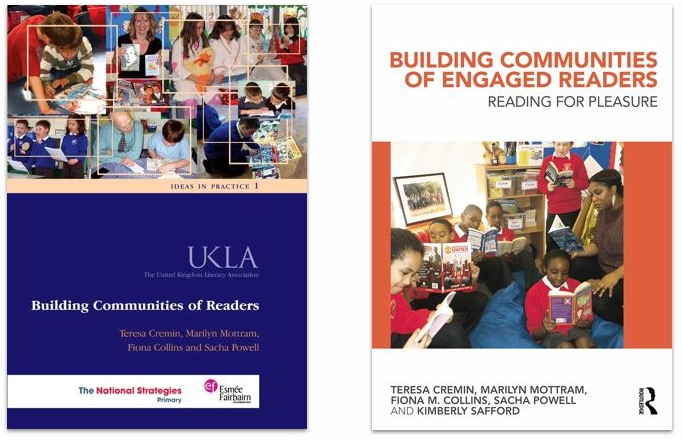
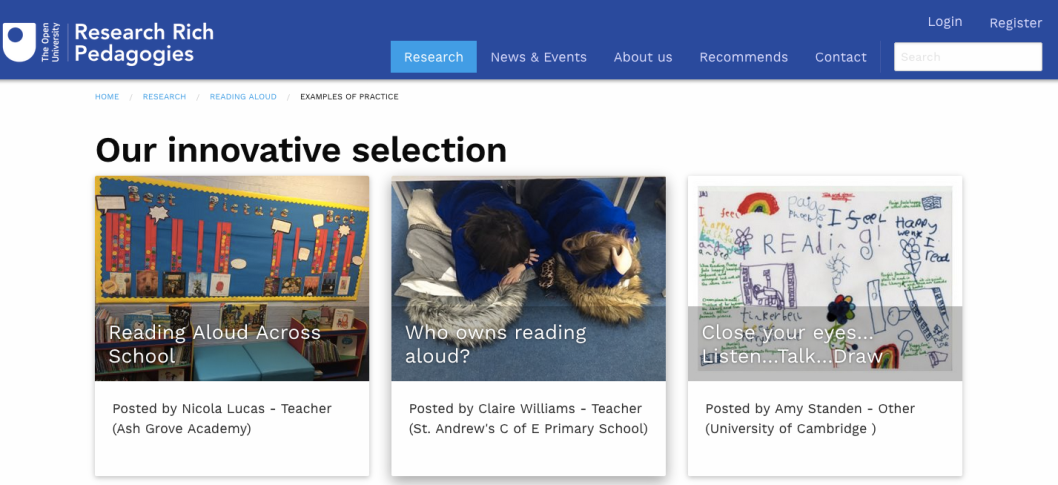


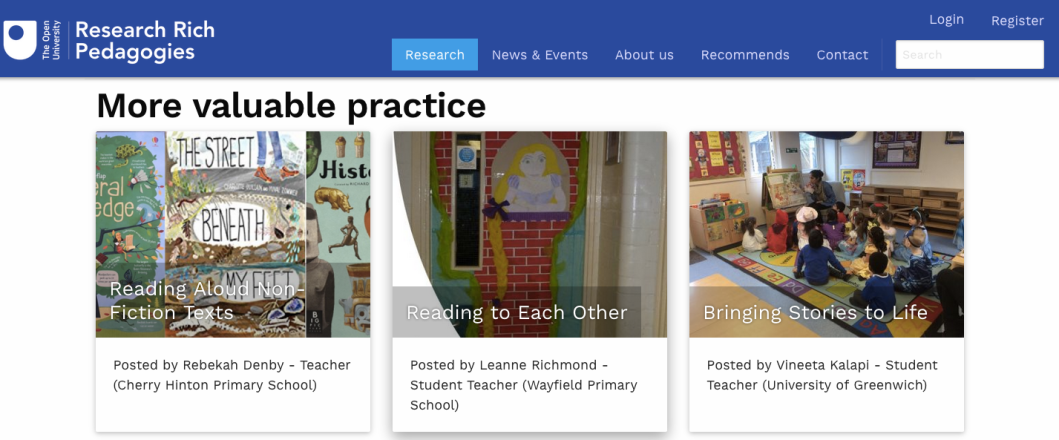
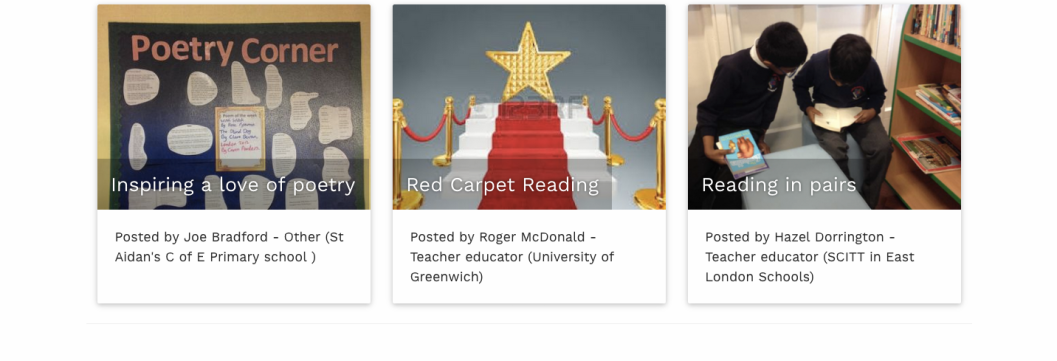

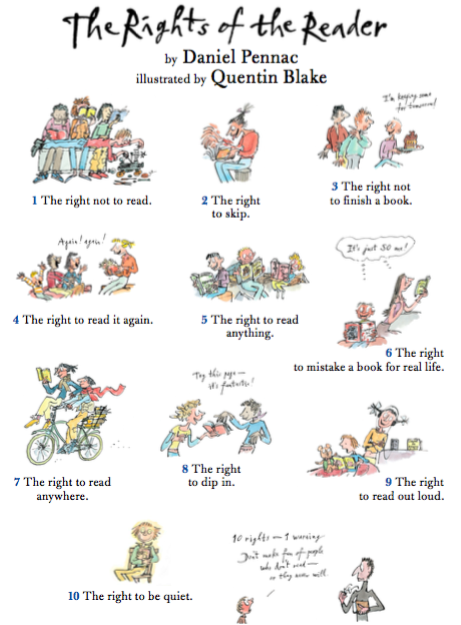
[…] Yesterday I was honoured to receive the 2019 Egmont Reading for Pleasure Teacher Award, in the category of experienced teacher! The announcement was made at the OU/UKLA Finding and Sharing Pleasure in Reading Conference in London, where I also led my first workshop on The Power of Reading Aloud. […]
LikeLike